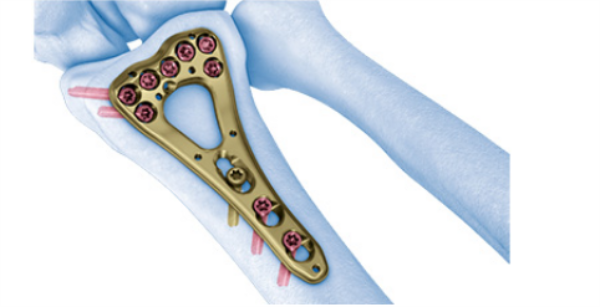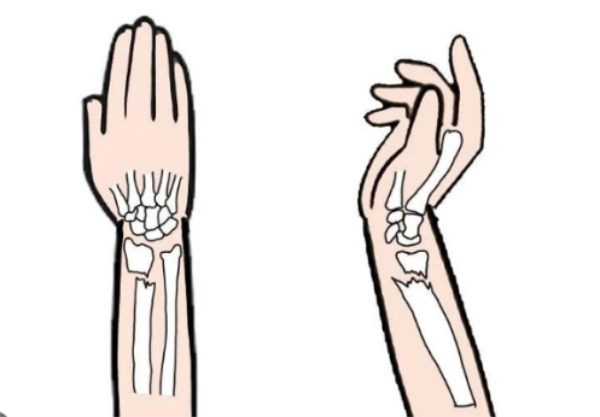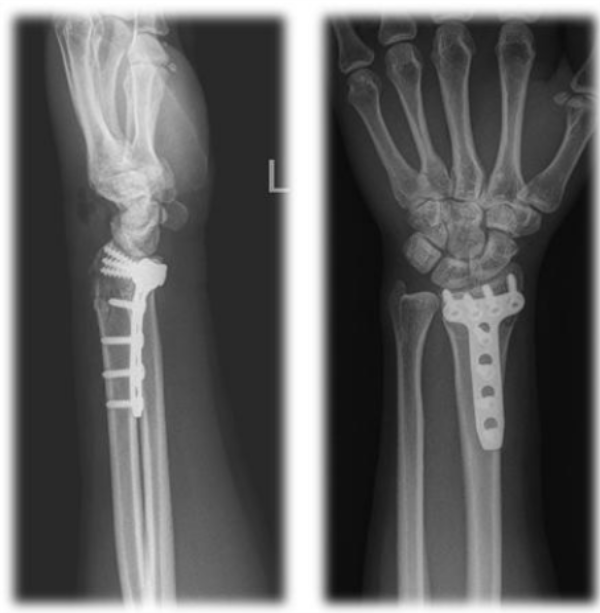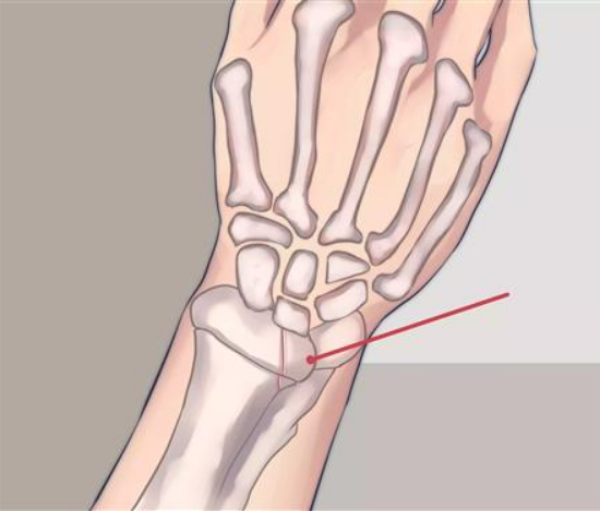Перелом дистального отдела лучевой кости — одна из наиболее распространенных травм суставов в клинической практике, которую можно разделить на легкую и тяжелую. При легких переломах без смещения для восстановления можно использовать простую фиксацию и соответствующие упражнения; однако при тяжелых переломах со смещением следует применять ручную репозицию, шинирование или гипсовую фиксацию; при переломах с явным и тяжелым повреждением суставной поверхности требуется хирургическое лечение.
ЧАСТЬ 01
Почему дистальный отдел лучевой кости подвержен переломам?
Поскольку дистальный конец лучевой кости является точкой перехода между губчатой и компактной костью, он относительно слаб. Когда пациент падает и касается земли, и сила передается на верхнюю часть руки, дистальный конец лучевой кости становится точкой наибольшей концентрации напряжения, что приводит к перелому. Этот тип перелома чаще встречается у детей, поскольку детские кости относительно малы и недостаточно прочны.
Когда запястье травмировано в разогнутом положении и при этом повреждена и сломана ладонь, это называется разгибательным дистальным переломом лучевой кости (Коллес), и более 70% таких переломов относятся именно к этому типу. Когда запястье травмировано в согнутом положении и при этом повреждена тыльная сторона кисти, это называется согнутым дистальным переломом лучевой кости (Смит). После дистальных переломов лучевой кости часто возникают некоторые типичные деформации запястья, такие как деформация типа «серебряная вилка», деформация типа «штык» и т. д.
ЧАСТЬ 02
Как лечат переломы дистального отдела лучевой кости?
1. Мануальная репозиция + фиксация гипсовой повязкой + применение уникальной мази, разработанной в традиционной китайской медицине Хунхуэй.
В подавляющем большинстве случаев переломов дистального отдела лучевой кости удовлетворительных результатов можно добиться с помощью точной ручной репозиции + гипсовой фиксации + применения методов традиционной китайской медицины.
В зависимости от типа перелома, хирургам-ортопедам необходимо использовать различные положения для фиксации после репозиции: как правило, переломы Коллеса (разгибательный дистальный перелом лучевой кости) следует фиксировать при ладонном сгибании на 5°-15° и максимальном локтевом отклонении; перелом Смита (сгибательный дистальный перелом лучевой кости) фиксируют при супинации предплечья и тыльном сгибании запястья. Дорсальный перелом Бартона (перелом суставной поверхности дистального отдела лучевой кости с вывихом запястья) фиксируют при тыльном сгибании запястного сустава и пронации предплечья, а волярный перелом Бартона — при ладонном сгибании запястного сустава и супинации предплечья. Периодически следует осматривать дорсальную репозицию для определения локализации перелома и своевременно регулировать натяжение ремешков малой шины для поддержания эффективной фиксации.
2. Чрескожная фиксация иглой
У некоторых пациентов с плохой стабильностью простая гипсовая фиксация не может эффективно поддерживать положение перелома, и обычно используется чрескожная игольчатая фиксация. Этот план лечения может использоваться как отдельный метод внешней фиксации, а также в сочетании с гипсом или внешними фиксирующими скобами, что значительно повышает стабильность сломанного конца при ограниченной травме, и отличается простотой выполнения, легкостью снятия и меньшим воздействием на функцию пораженной конечности пациента.
3. Другие варианты лечения, такие как открытая репозиция, внутренняя фиксация пластиной и т. д.
Такой план лечения может применяться у пациентов со сложными типами переломов и высокими функциональными требованиями. Принципы лечения включают анатомическую репозицию переломов, поддержку и фиксацию смещенных костных фрагментов, костную пластику костных дефектов и раннюю помощь. Функциональные мероприятия направлены на скорейшее восстановление функционального состояния, существовавшего до травмы.
В целом, при подавляющем большинстве переломов дистального отдела лучевой кости в нашей больнице применяются консервативные методы лечения, такие как мануальная репозиция + фиксация гипсовой повязкой + уникальное наложение гипса в соответствии с принципами традиционной китайской медицины Хунхуэй и т. д., что позволяет достичь хороших результатов.
ЧАСТЬ 03
Меры предосторожности после вправления перелома дистального отдела лучевой кости:
А. При фиксации переломов дистального отдела лучевой кости следует обращать внимание на степень затяжки. Степень фиксации должна быть адекватной, не слишком тугой и не слишком свободной. Слишком тугая фиксация может нарушить кровоснабжение дистального отдела конечности и привести к тяжелой ишемии. Слишком свободная фиксация может привести к повторному смещению кости.
В. В период фиксации перелома не обязательно полностью прекращать активность, но необходимо уделять внимание правильным упражнениям. После иммобилизации перелома в течение определенного времени следует добавить некоторые базовые движения запястья. Пациентам следует настаивать на ежедневных тренировках, чтобы обеспечить эффект от упражнений. Кроме того, для пациентов с фиксаторами степень их затяжки можно регулировать в зависимости от интенсивности упражнений.
C. После фиксации дистального перелома лучевой кости следует обратить внимание на чувствительность дистальных отделов конечностей и цвет кожи. Если дистальные отделы конечностей в области фиксации становятся холодными и цианотичными, чувствительность ухудшается, а активность значительно ограничивается, необходимо рассмотреть вопрос о том, не вызвано ли это слишком тугой фиксацией, и своевременно обратиться в больницу для коррекции.
Дата публикации: 23 декабря 2022 г.














